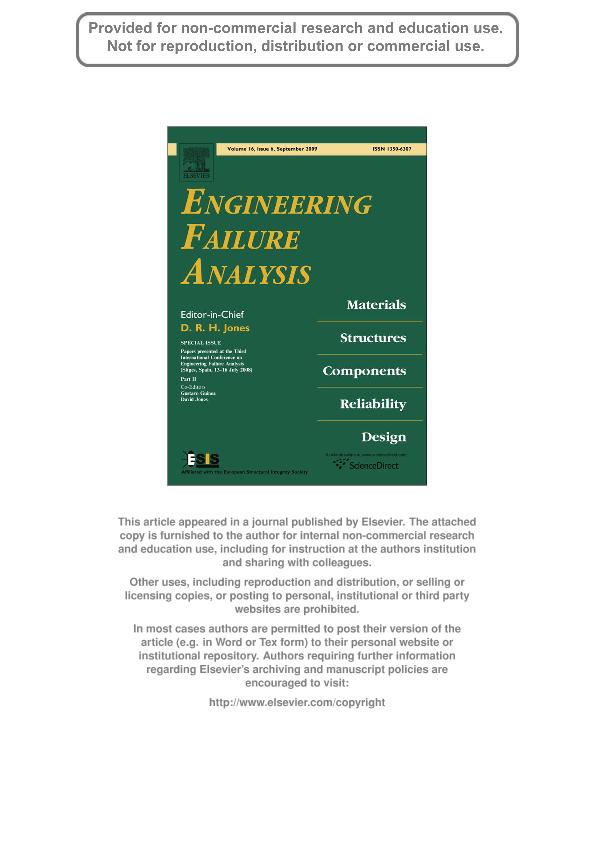Artículo
Common root causes of recent failures of flanges in pressure vessels subjected to dynamic loads
Fecha de publicación:
17/09/2008
Editorial:
Pergamon-Elsevier Science Ltd
Revista:
Engineering Failure Analysis
ISSN:
1350-6307
Idioma:
Inglés
Tipo de recurso:
Artículo publicado
Clasificación temática:
Resumen
Present rules in fabrication codes are aimed to reduce the probability of fatigue cracks in flanges welded to pressure vessels subjected to cyclic pressure or vibrations. Yet, several leaks and ruptures have recently occurred at flanges in pressure vessels and pipes. A review of three cases is presented, which involved five failures; their common root causes are discussed, and the influences of manufacture and operation conditions on crack initiation and propagation mechanisms are highlighted. Some cracks initiate from the outer surface, but many cracks initiate in the outer half of the thickness of the reinforcement, from very difficult to avoid weld defects. Ultrasonic testing, with an adequate procedure, can be reliably used to detect these defects before they become leaks. Common aspects of these failures are crack initiation in weld metal and heat affected zone of welds, all related to an inadequate design of the reinforcement and poor execution of the welding procedure. Weld inadequacy is in one case a result of an increase in thickness as an attempt to increase safety; which also increased cyclic stresses due to excessive weight of the vessel. Fillet welded reinforcements induced rigidity inconsistencies within the flange joint, and concentrated deformations in the failed regions. In another case, preoperational hydrotest could have been detrimental.
Archivos asociados
Licencia
Identificadores
Colecciones
Articulos(INTEMA)
Articulos de INST.DE INV.EN CIENCIA Y TECNOL.MATERIALES (I)
Articulos de INST.DE INV.EN CIENCIA Y TECNOL.MATERIALES (I)
Citación
Otegui, Luis Jose; Fazzini, Pablo Gabriel; Marquez, Anibal Angel; Common root causes of recent failures of flanges in pressure vessels subjected to dynamic loads; Pergamon-Elsevier Science Ltd; Engineering Failure Analysis; 16; 6; 17-9-2008; 1825-1836
Compartir
Altmétricas




